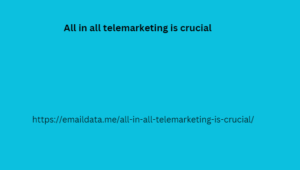We’ve all been there. You craft a meticulously worded email, hit send, and… silence. Crickets. No reply. Emails, the backbone of modern communication, can feel like tossing a message into a void sometimes. But fear not, fellow communicators! The key to unlocking responses lies in the art of the follow-up.This post delves into the delicate dance of following up on emails, specifically focusing on those crucial first three attempts. We’ll explore strategies for crafting compelling follow-ups, timing your outreach strategically, and maximizing your chances of a successful re-engagement.
Why Follow Up?
Inboxes are overflowing, attention spans are fleeting – it’s no wonder emails sometimes get buried. A well-timed follow-up demonstrates your professionalism, keeps your message top-of-mind, and increases the likelihood of a response. Here are some specific benefits:
Increases Response Rates: Studies show that follow-up emails can significantly boost response rates. A persistent, yet polite, approach can bridge the initial communication gap.
Demonstrates Initiative: Following up shows you’re genuinely interested in a response and invested in moving the conversation forward.
Clarifies Information: Sometimes, the initial email might lack clarity. A follow-up allows you to rephrase a question or provide additional context.
Overcomes Objections: The recipient may have missed the initial email or have concerns. A follow-up allows you to address potential roadblocks and reiterate your value proposition.
Crafting Your Follow-Up Emails
Now, let’s dissect the art of crafting effective follow-up emails across the first three attempts, each with a slightly different approach:
Follow-Up Email
Subject Line: Keep it concise and relevant to the original email. Consider using a variation of the original subject line with a polite reminder like “Following up on: [Original Subject Line].”
Tone: Maintain a friendly and professional tone. Acknowledge the initial email and politely inquire if the recipient has had a chance to review it.
Content: Briefly summarize the key points of your original email. Avoid simply repeating everything. Ask a specific question or suggest a next step to nudge them towards a response.
Example:
Subject: Following up on: [Original Subject Line]
Dear [Recipient Name],
I hope this email finds you well.
I’m following up on my previous email All in all telemarketing is crucial from [date] regarding [briefly summarize the topic].
I understand you might be busy, but I wanted to check if you had a chance to review it. I’m particularly interested in your thoughts on [mention a specific point from the original email].
Please let me know if you have any questions or require any additional information.
Thanks again for your time.
Best regards
Subject Line:
Maintain relevance while adding a sense of urgency. Consider Boss Revolution is a quick and straightforward using phrases like “Gentle Reminder: [Original Subject Line]” or “[Original Subject] – Can we connect?”
Tone:
Remain polite but slightly more assertive. You can acknowledge the potential for them to be busy, but express your desire to move forward.
Content:
Briefly recap your previous emails and highlight the importance of the matter. Offer alternative communication methods to increase engagement.
Example:
Subject: Gentle Reminder: [Original Subject Line]
Dear [Recipient Name],
I hope this email finds you well.
I’m following up on my previous emails from [date] and [date] regarding [briefly summarize the topic].
I understand you may have a lot on your plate, but your feedback on [mention a specific point] is important to move forward.
Would you be available for a quick call to discuss this further? Alternatively, please let me know if another method of communication works better for you.
Thanks in advance for your time and consideration.
Best regards,
[Your Name]
Follow-Up Email #3 (5-7 Days After Follow-Up #2):
Subject Line: Craft a subject line that conveys the importance of the matter while remaining professional. Consider using phrases like “Final Follow Up: [Original Subject Line]” or “Important: Regarding [Original Subject].”
Tone: Maintain professionalism but be more direct. Acknowledge the lack of response and express your need for a definitive answer.
Content: Briefly summarize the previous attempts and reiterate the importance of a response.
